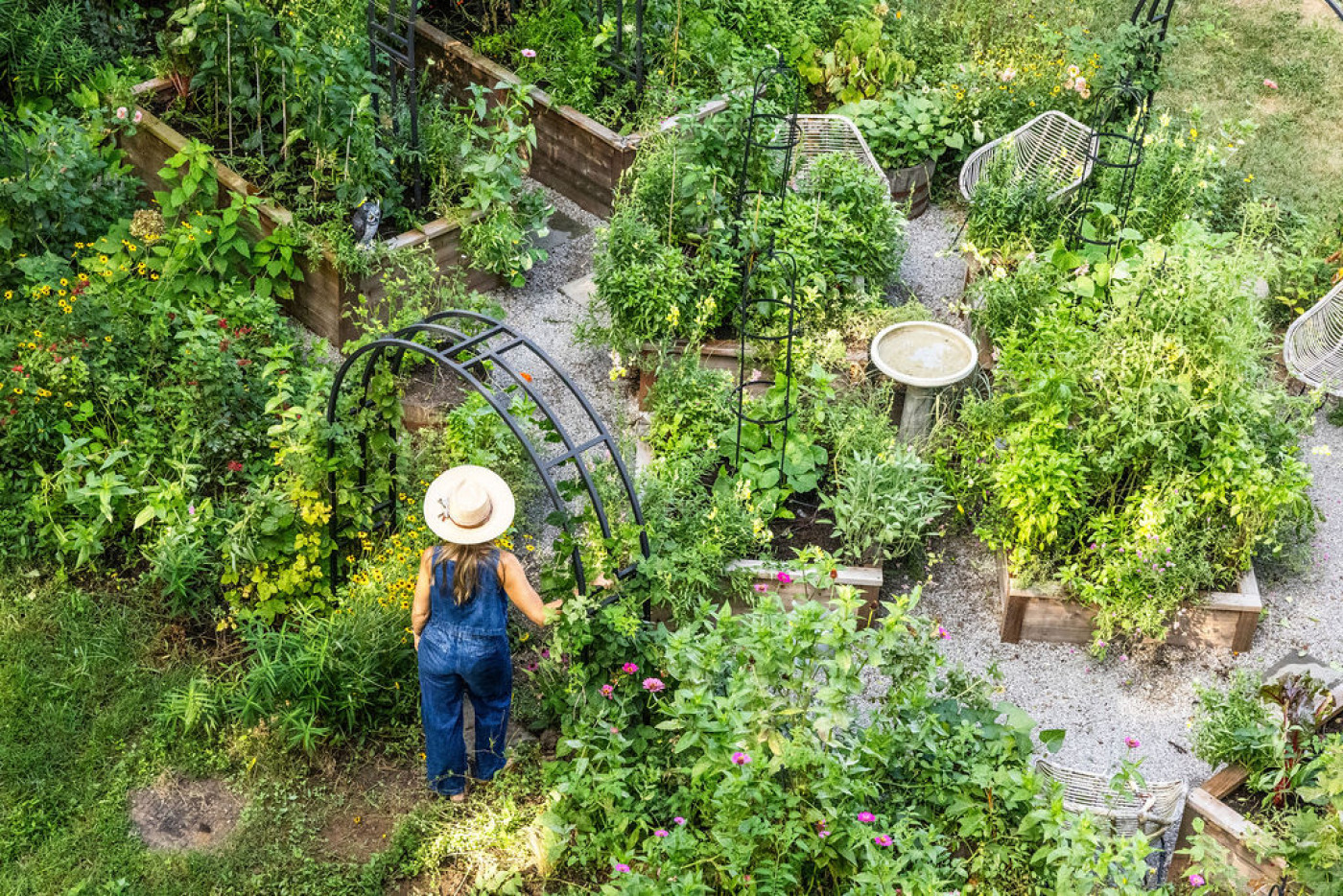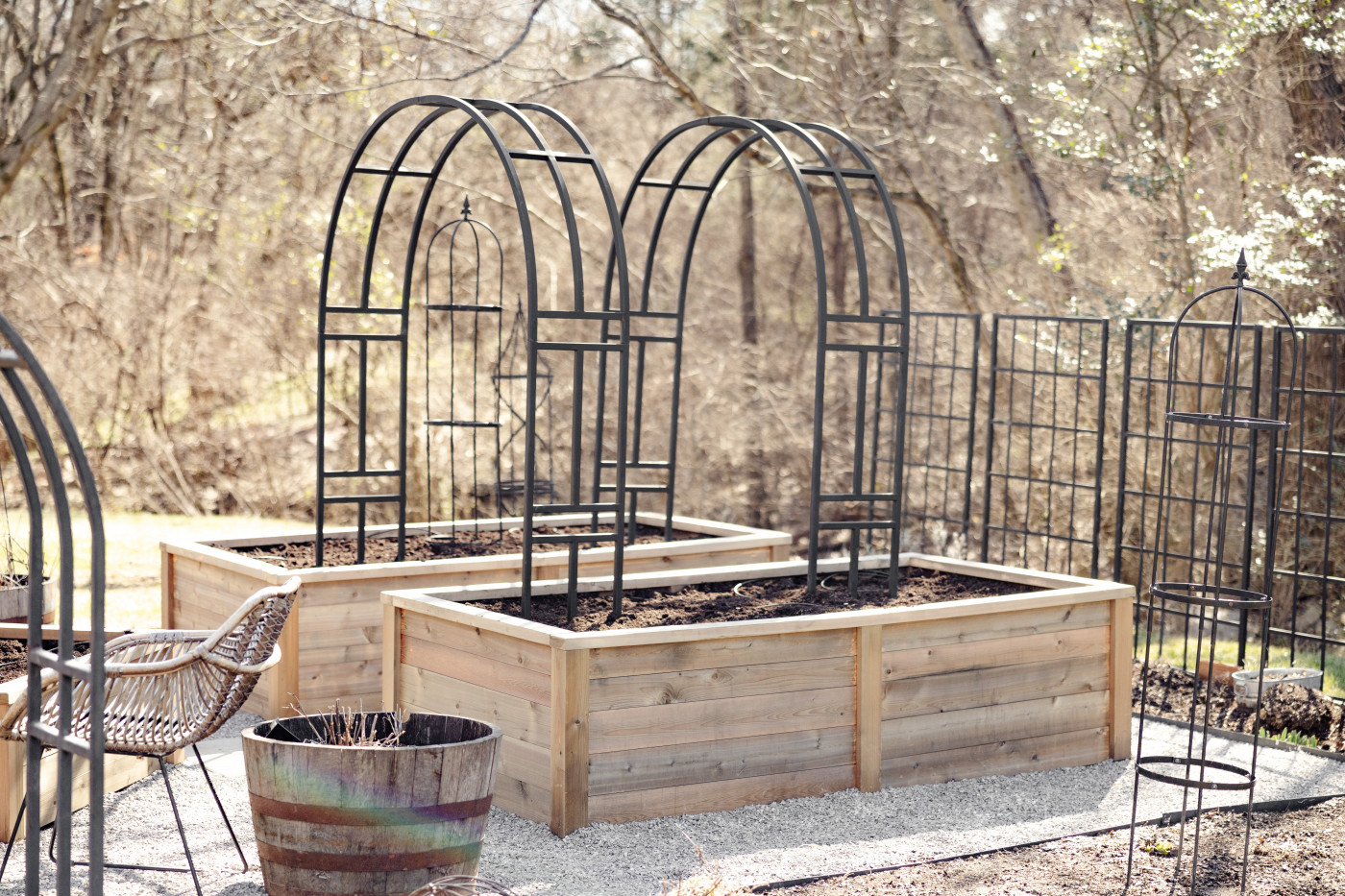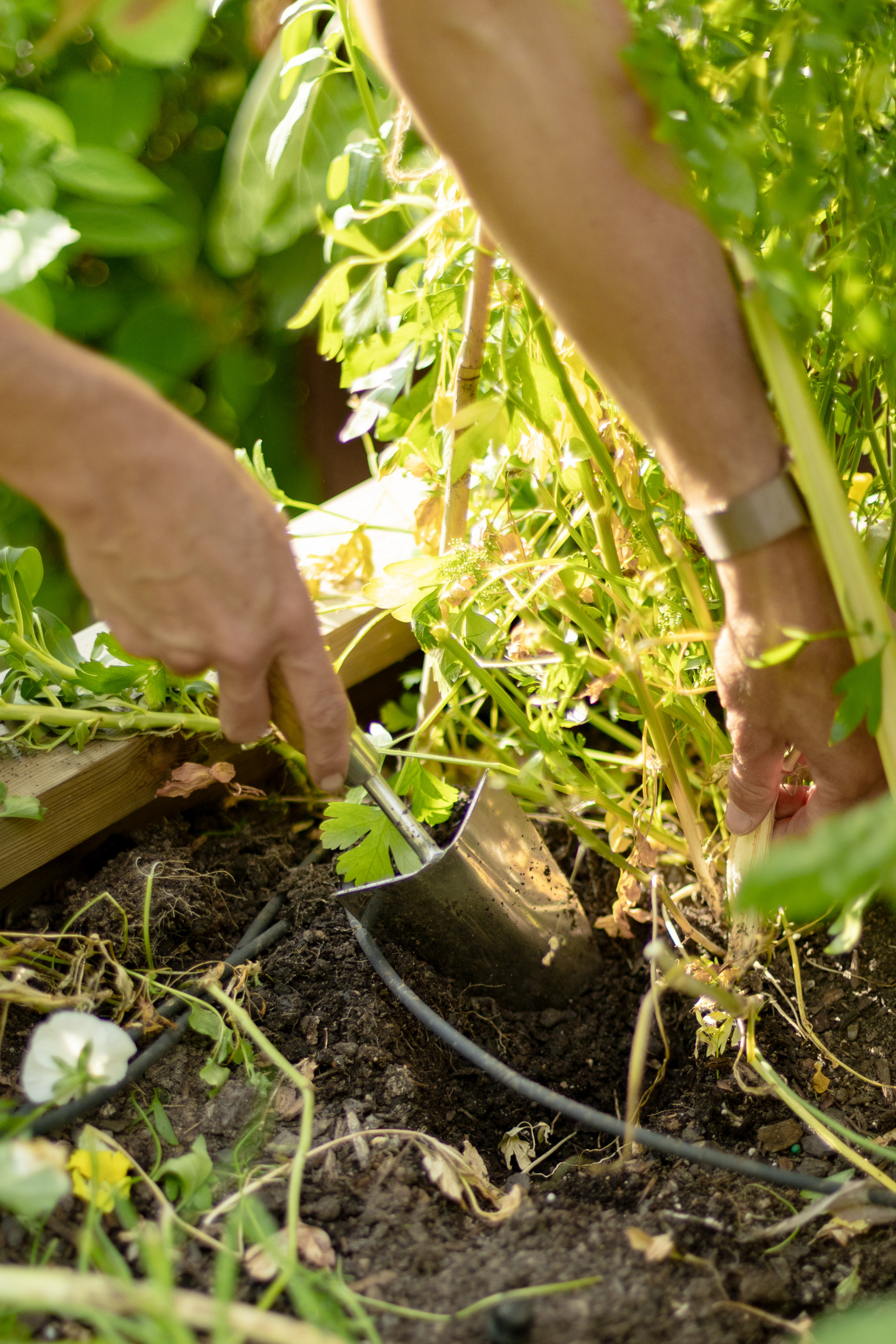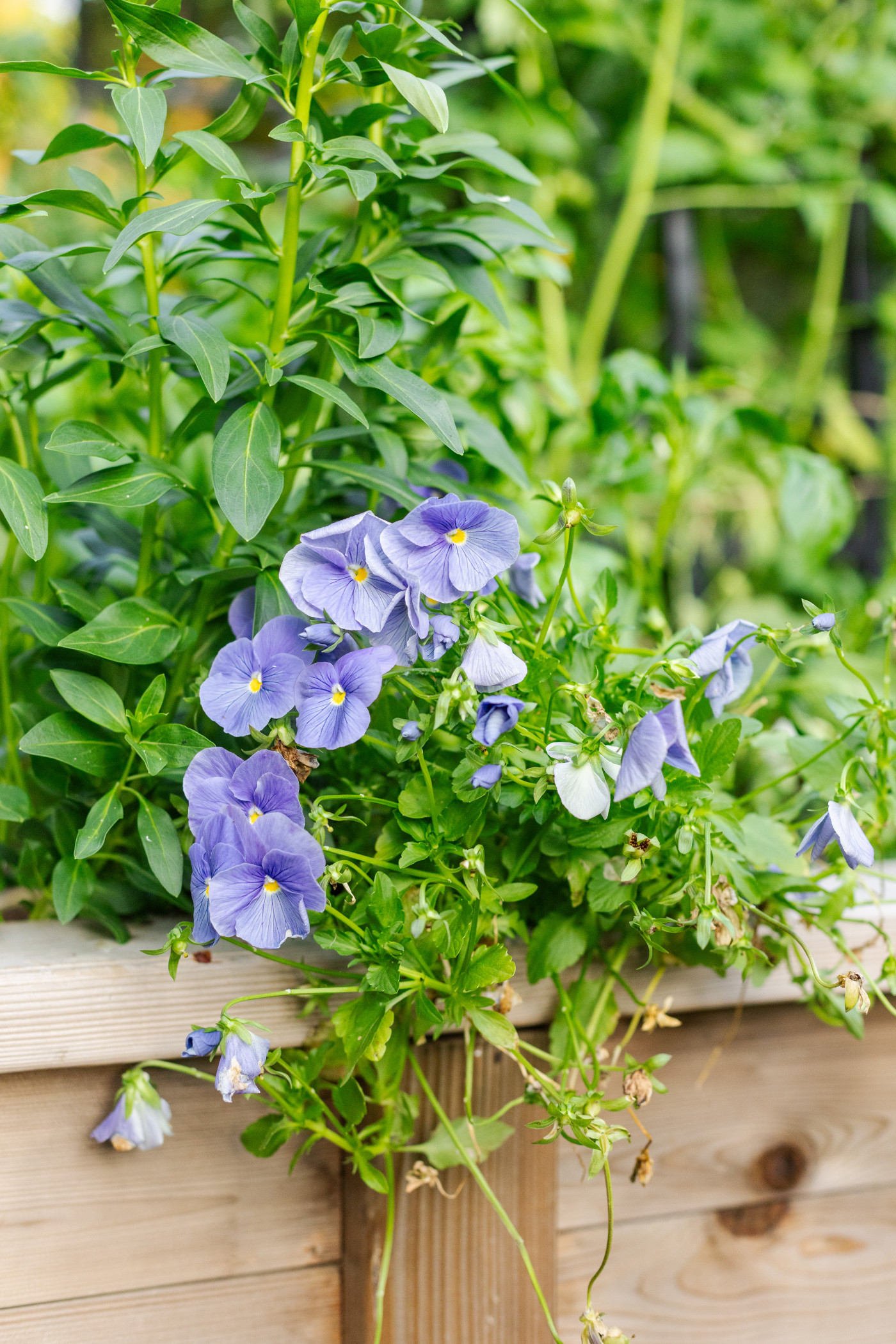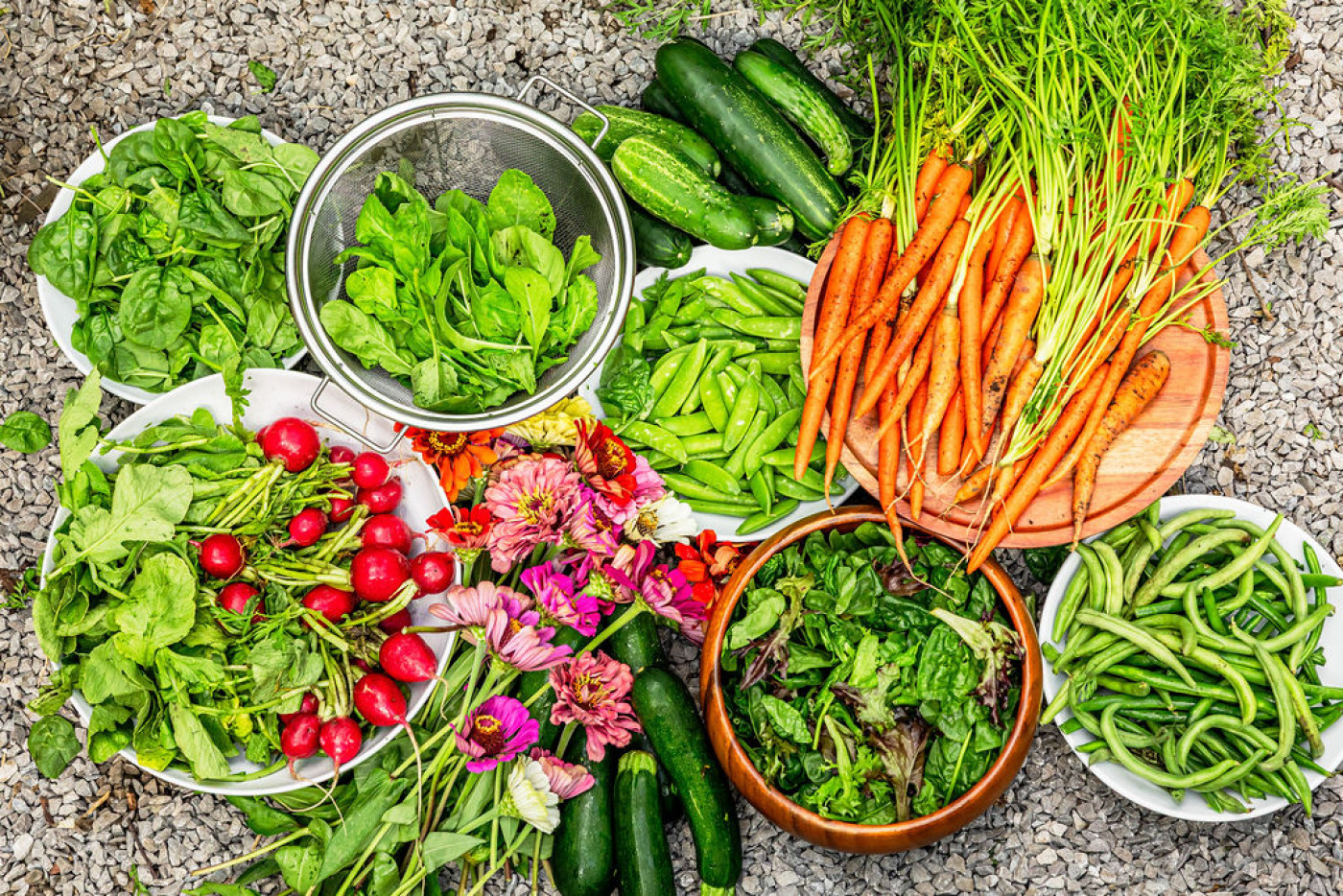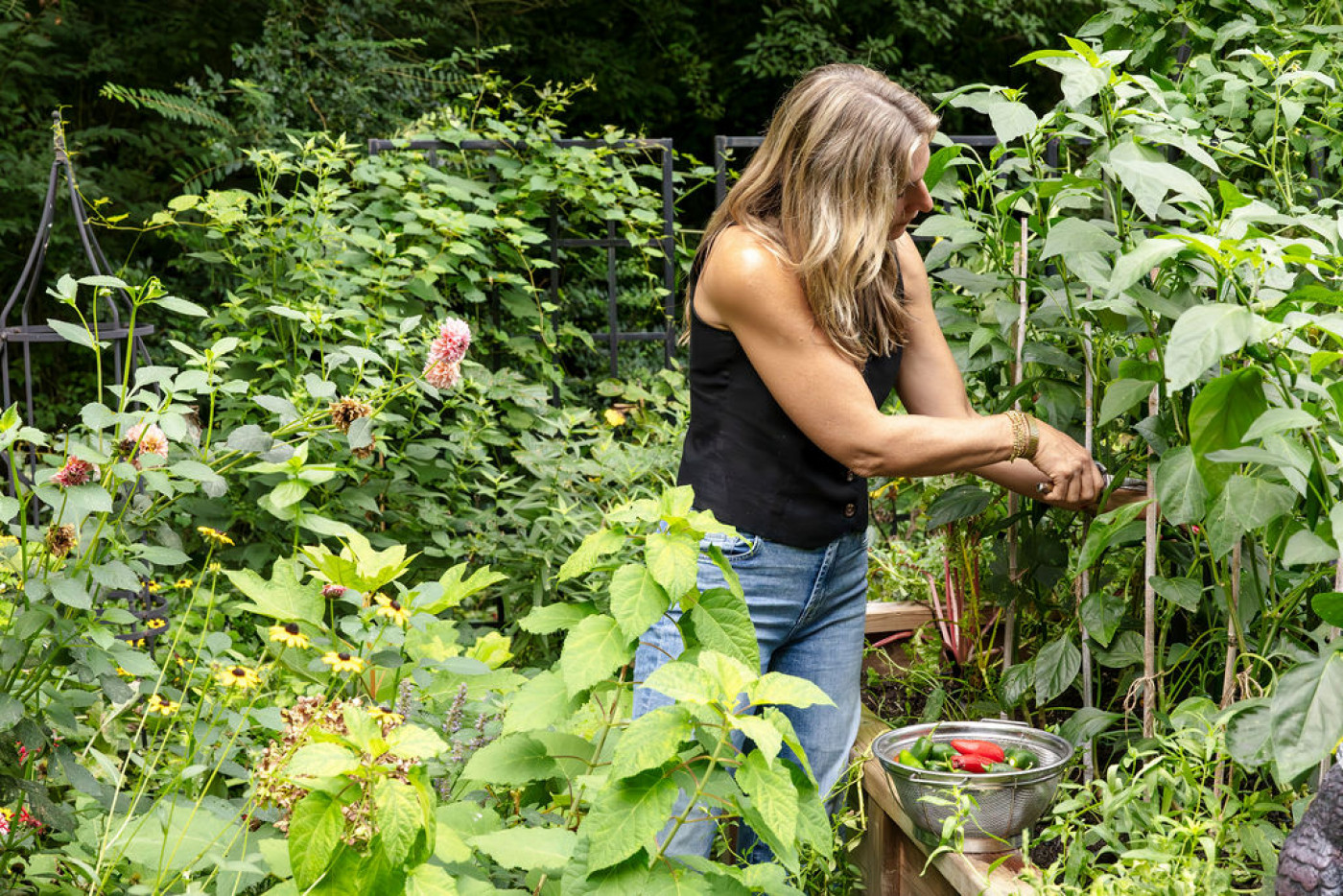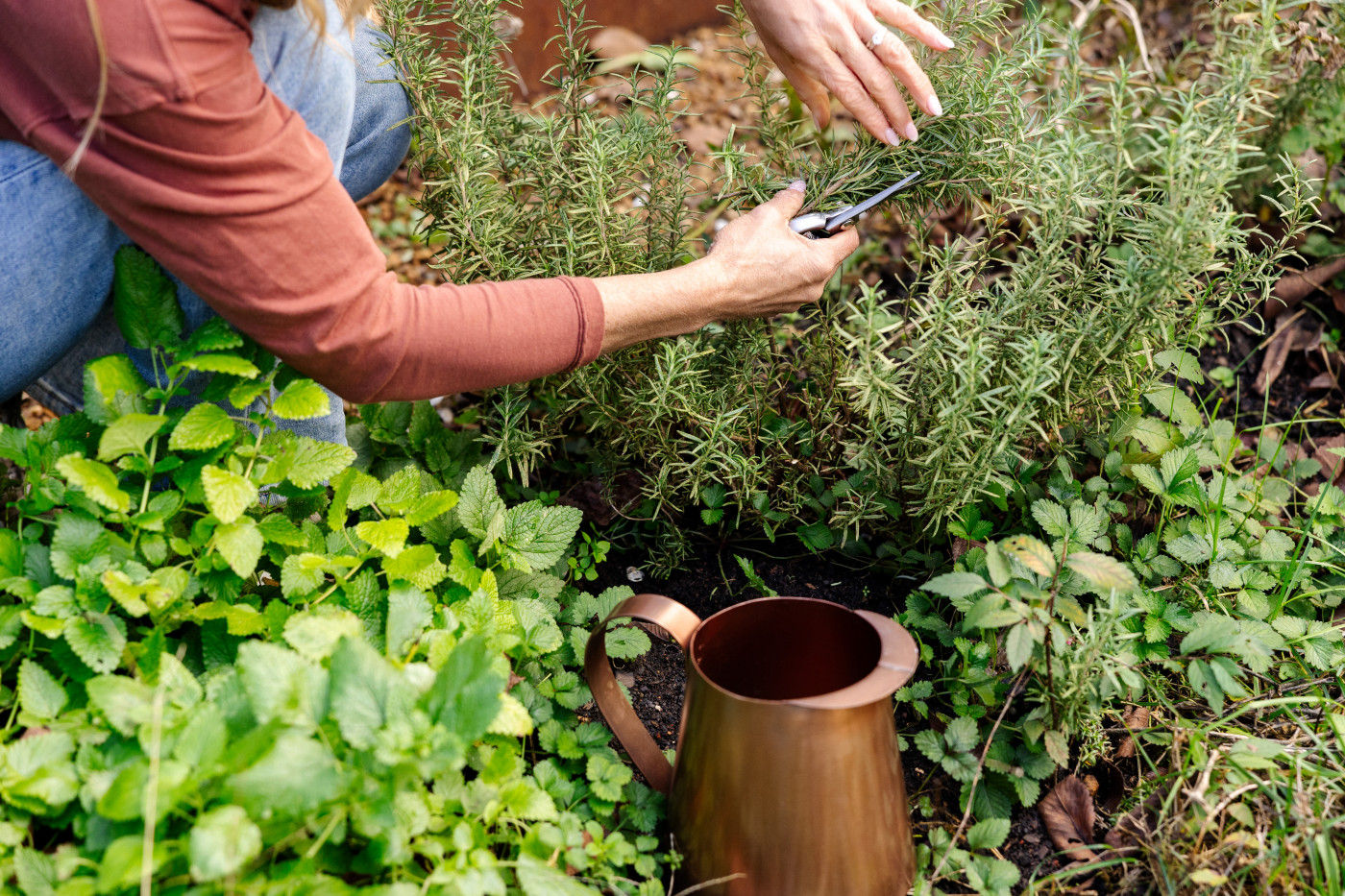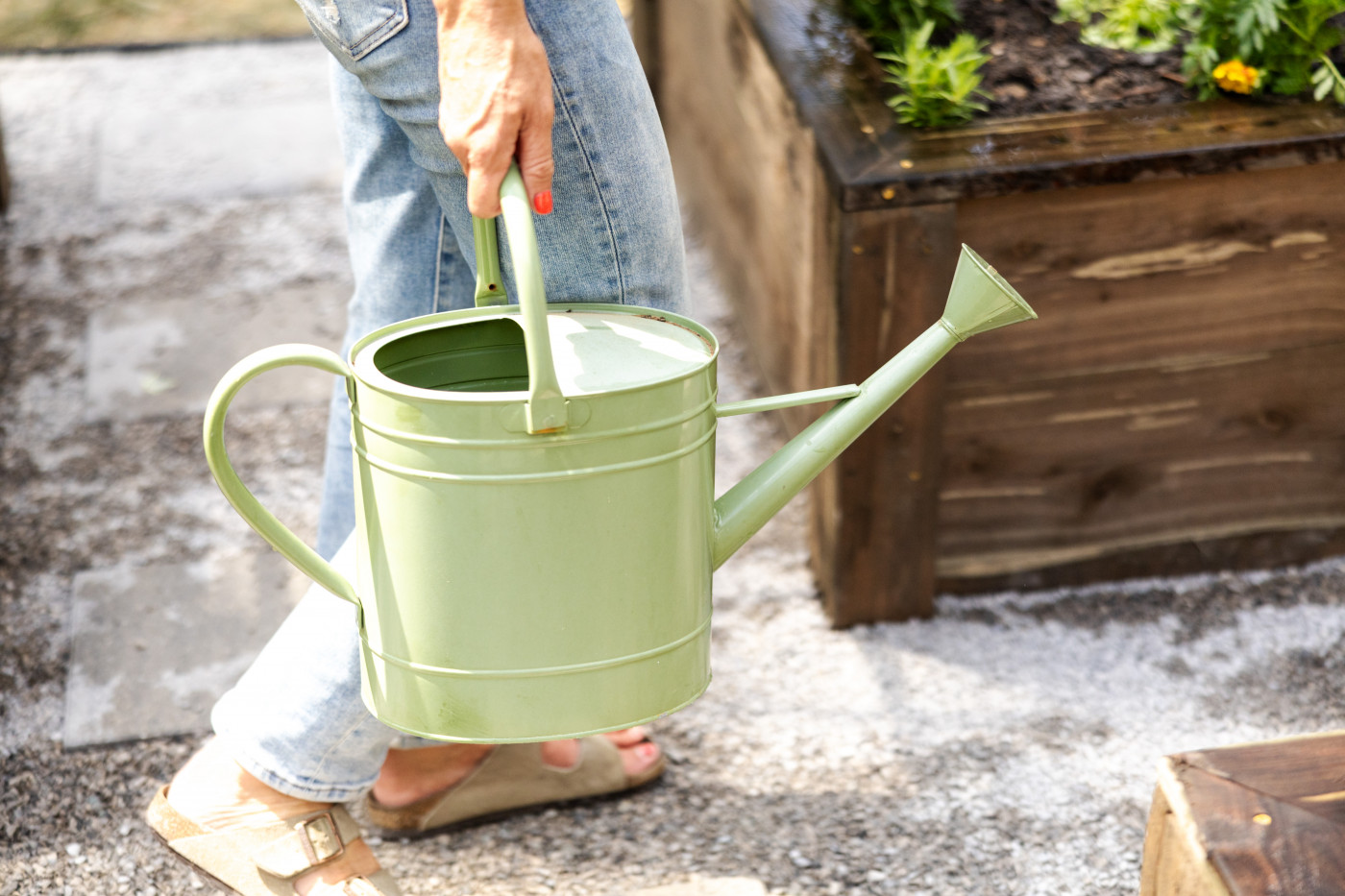At a Glance
- Follow a month-by-month, organic kitchen garden plan that shows what to do each season to prepare beds, protect plants, and keep soil thriving.
- Learn a simple monthly rhythm for seasonal garden tasks.
- Get practical checklists for winter reset, spring setup, summer training, fall cleanup, and daily habits that reduce pests and boost productivity.
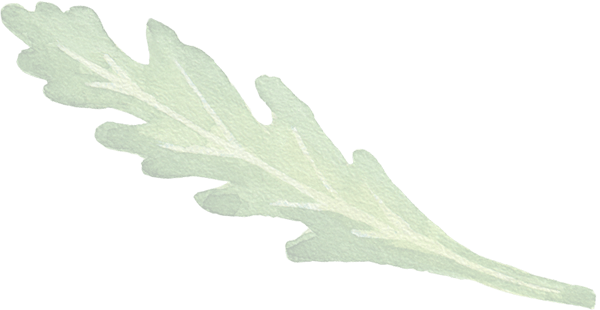

Start Your Garden the Easy Way
Get growing with 10 foolproof seed varieties, a 120-page gardening guide, planting plans, and step-by-step video lessons—all designed to help you succeed. The Easy Garden Kit makes it simple, fun, and affordable to bring fresh food and flowers to your backyard.
What to Do in the Garden in 2026
I run my garden on a steady rhythm, one month at a time. Some months I'm building, others I'm pruning or trellising, and a couple months of the year I'm mostly observing and planning. This calendar is not about chasing every crop you could possibly plant. It's about the quiet work that keeps a raised bed kitchen garden healthy, resilient, and beautiful all year. I follow the Gardenary Way, which means compost is my mulch, natural pest management, and a soil-first mindset. Use this as a general monthly blueprint, then adjust for your local climate if needed.
A Month-by-month Guide to a Thriving, Organic Garden
January Garden Tasks:
- Clean, sharpen, and oil tools
- Tidy the shed, wash trays and pots, and map the garden
- Top-dress beds with 1 to 2 inches (2.5 to 5 cm) of compost and water in
- Sweep and weed
- Order seeds, stakes, netting, and spring supplies
January is a reset month. I clean and sharpen pruners, oil wooden handles, and sort tools so everything is easy to grab when spring speeds up. I make simple repairs while the garden is quiet.
I empty and organize the shed, washing trays and pots so they're seed-ready without cobwebs or contamination.
Out in the garden, I finish cutting back spent perennials, pull winter weeds, and top-dress beds with a fresh layer of compost. I sweep garden paths to keep them clean, and clean out miscellaneous fallen debris from the garden bed. I also order essentials like stakes, netting, and seeds.
This is also the perfect time to sketch the bed layout for next season. Place the main row for tall plants, and plan where short herbs and flowers will edge the beds for beauty and pest balance.
→Learn more about what to plant in January.
February Garden Tasks:
- Install or tighten trellises and hoops
- Check the irrigation system
- Know your cool-season planting dates and buy seeds
- Set up seed-starting space; clean trays and begin appropriate cool-season transplants
- Clear debris from the garden
- Order potatoes and onion sets
- Repair or strengthen any loose garden bed structures or fencing
February is when I get the garden’s bones in order. I tighten trellises, set hoops where they will be needed, and check drip lines, timers, and connectors so there are no surprise leaks later. I clear winter debris, pull shallow weeds before they root deeply.
Indoors, I set up the seed-starting area. I start any cool-season seeds, if appropriate for my climate, and sketch a simple garden plan for March.
→Learn more about what to plant in February.
March Garden Tasks:
- Install deer/rabbit/squirrel barriers: fence, hardware cloth, netting/row cover, and fragrant herb borders
- Start any appropriate seeds indoors; direct sow outside once soil is ~45°F (7°C)
- Test soil; amend with compost, worm castings, or kelp meal as needed
- Hang and maintain hummingbird feeders (1:4 sugar water; no dye)
In March, begin sowing seeds indoors (keeping in mind the right timing for your area) and, once your soil is truly workable, you can start direct sowing cool-season crops outside. Aim for soil around 45°F (7°C), keep the top inch evenly moist, and space to account for the mature size of each crop so plant canopies can later shade the soil.
Run a soil test before the season ramps up. Check pH and nutrient levels, then amend the beds with compost plus gentle boosts like worm castings or kelp meal if needed—no synthetics. Healthy soil now means fewer problems later.
March is also a great time to consider the surrounding wildlife, both good and bad. Attract beneficial pollinators, like hummingbirds. Fill hummingbird feeders with 1:4 sugar water (no dye). They're so beautiful and fun to watch as they zoom around. They truly bring life and excitement to the garden.
At the same time, set up wildlife deterrents like fencing for deer or rabbits, mesh or row cover over tender spots, and aromatic borders (think chives, garlic, rosemary) to make edges less tempting.
→Learn more about what to plant in March.
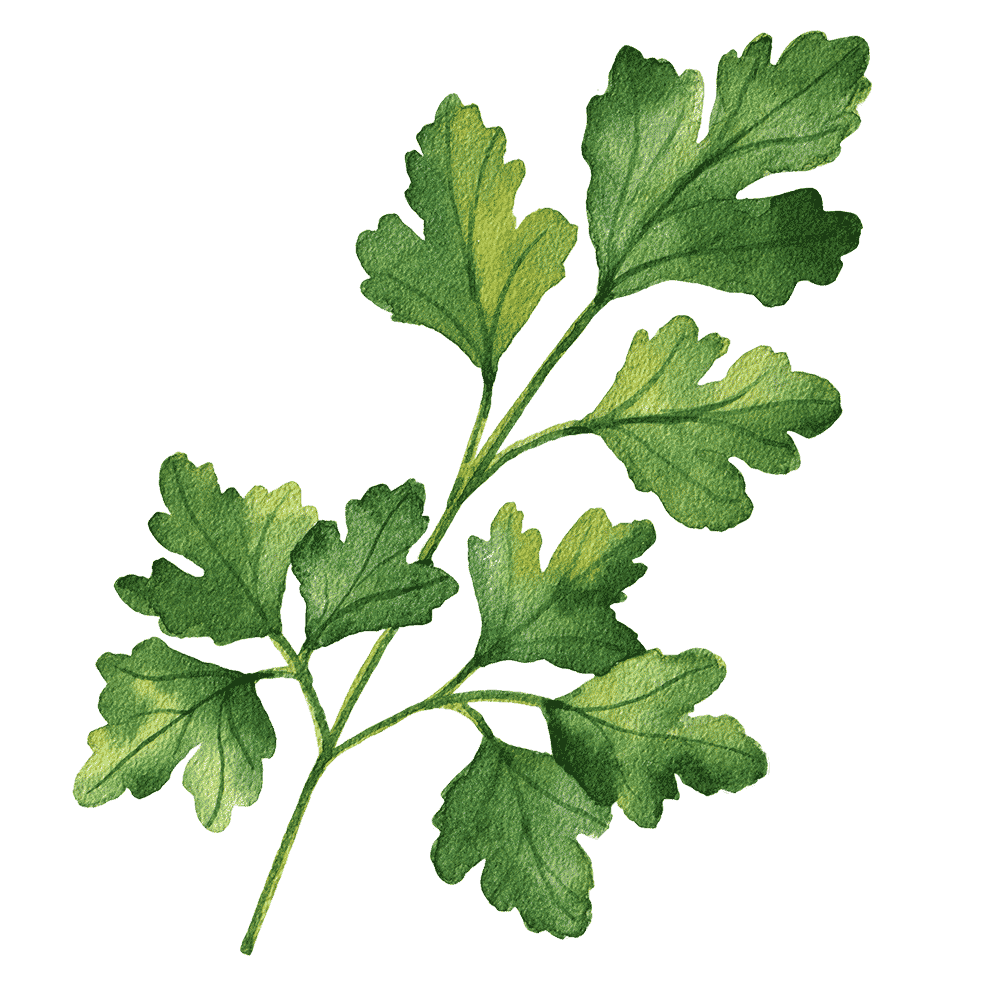
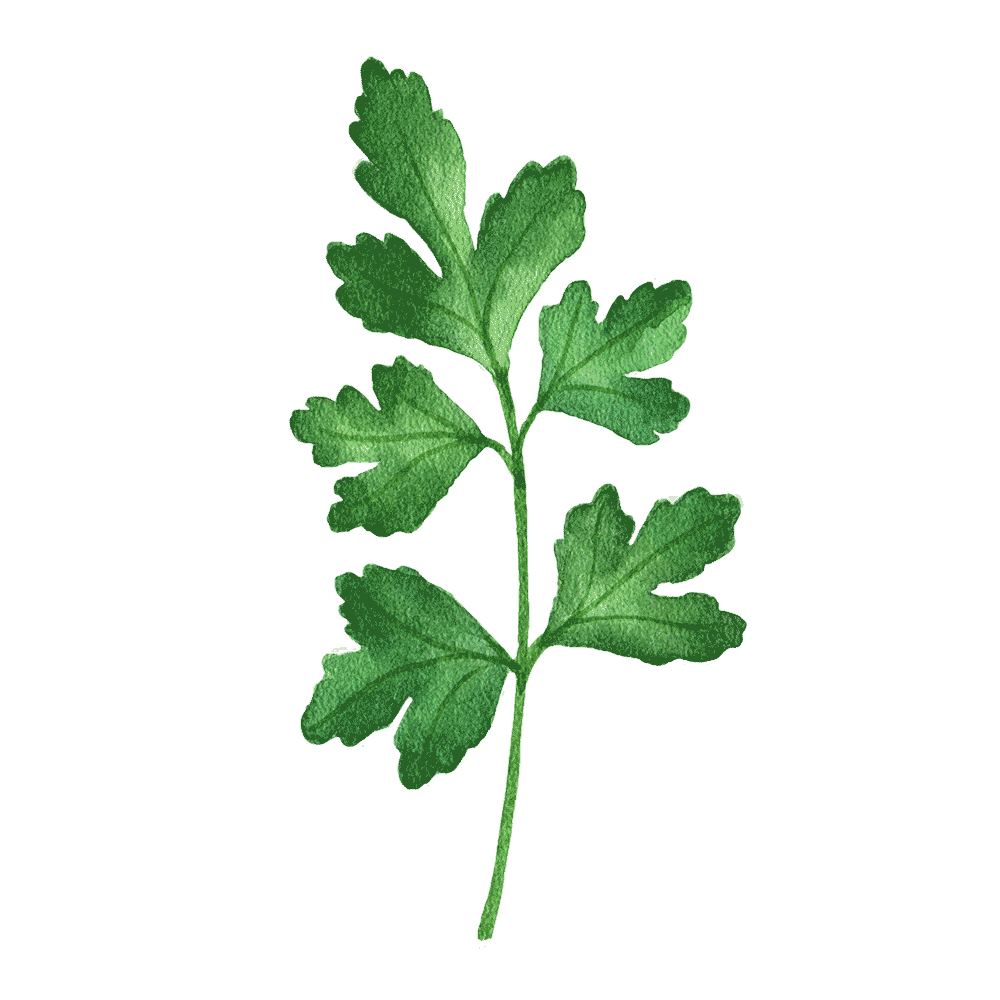
Start your dream garden this fall
April Garden Tasks:
- Scout daily for aphids on new plants
- Clean and fill containers with compost-rich mix; confirm drainage
- Plant warm-season edibles after the last frost, harden off first
- Support bees: plant colorful flowers with continuous blooms
Once the danger of frost has passed, I harden off warm-season transplants and plant them out: small tomatoes, peppers, cucumbers, and friends get tucked into warm, compost-rich soil. Meanwhile, I support bees by keeping early blooms coming (borage, calendula, alyssum), avoiding sprays on open flowers, and setting a shallow water dish with pebbles so pollinators can drink safely. Healthy pollinators and calm, consistent care now set the tone for the whole warm season.
I walk the beds a few minutes most mornings, checking tender new growth and the undersides of leaves for aphids. If I find them, I start gently: prune the worst leaves, give a strong blast of water, and let ladybugs and lacewings do their work. If pressure persists, I use a light, diluted Castile soap or garlic spray—no synthetic pesticides—and keep plants unstressed.
I also prep any smaller containers I want to use for the season. I scrub pots, check drainage holes, fill with a compost-rich soil mix, and set pots where they’ll get 6–8 hours of sun. Now they're ready for transplants or seeds.
→Learn more about what to plant in April.
May Garden Tasks:
- Direct sow in warm, crumbly soil; harden off and plant any remaining transplants
- Train vines, tie stems loosely, and prune lightly for airflow
- Thin seedlings to mature spacing for balanced, intensive planting
- Add nectar-rich annuals at bed edges and in containers for pollinators
- Weed early and weekly; let plant canopies shade the soil
- Scout for spider mites; water-blast first, prune damage, and keep moisture steady
- Pinch, deadhead, and harvest frequently to channel energy into steady production
May is for momentum. Once the soil is warm and crumbly, direct sow generously—seeds often catch up to transplants when the ground holds steady heat. As growth takes off, train vines up their supports, tie stems loosely with soft ties, and prune only to improve airflow without stressing the plant.
I thin intensively this month, removing the weakest seedlings so the strongest can thrive. Intensive planting is about balance, not crowding: leaves will eventually touch to form a living mulch, but every plant still needs its share of sunlight, space, and nutrients. I also tuck annual flowers along bed edges and into containers to bring in pollinators and keep the garden lively all day.
Prevention rules in May. Fight weeds early—hand-pull while they’re tiny, then let close spacing shade the soil. Weeds can be a battle this time of year!
Watch for spider mites in warm, dry spells; look for stippled leaves. Start gently: rinse foliage with a strong blast of water, prune the worst leaves, and keep moisture consistent.
Deadhead spent blooms; this will keep flowers coming back all season.
→Learn more about what to plant in May.
June Garden Tasks:
- Enjoy June harvests
- Check irrigation/drip/soaker/olla watering systems
- Direct sow warm-soil crops and plant quick successions where space opens
- Train vines; stake/trellis, tie loosely, and prune for airflow and easy harvests
- Thin crowded seedlings
- Deadhead flowers to keep blooms coming
- Weed weekly while small; let close spacing form a living mulch that shades the soil to prevent abundant weeds
- Scout daily for pests; hand-pick, water-blast aphids/mites, and reserve sprays for infestations or surges
- Harvest little and often to cue continuous production and better flavor
- Prune often and remove overly damaged stems or plants.
By June, your garden should be fully alive! It's the moment when steady care turns spring setup into summer abundance. I start with water: I set a simple morning schedule so plants drink deeply before the heat arrives. Keep an eye on your irrigation system to make sure everything is functioning properly during the heat.
Planting isn’t over, it just shifts form. Warm soil means it’s a great time to direct sow a few more quick warm-weather crops, which often catch up to transplants fast. As vines take off, keep training them early and often, tie stems loosely, and prune just enough to improve airflow and keep fruit easy to find.
You should also be looking for opportunities to prune as many of your plants are getting big at this point.
For pests, this month you might see plenty. I keep it simple: prune away damage, hand-pick larger pests, and use a firm blast of water on aphids and mites.
→Learn more about what to plant in June.
July Garden Tasks:
- Water deeply in the morning, add temporary afternoon shade during heat spikes
- Top-dress with finished compost to cool soil and retain moisture; give containers extra hydration checks
- Harvest daily; clear overripe fruit and spent plants
- Direct sow successions
- Keep tomatoes tied and pruned for airflow
- Scout for heat-loving pests (vine borer, spider mites, aphids) and disease (mildew); prune damage, water-blast first, reserve B.t. for severe caterpillar pressure
- Dump standing water to curb mosquitoes
- Keep weeds in check with quick weekly passes
- Start thinking about Fall gardening and start seeds for crops that take a long time to mature, like pumpkins
July is all about harvesting smart and protecting plants from heat. I water deeply in the morning so roots drink before the day bakes. I add temporary shade—row covers, shade cloth, or even a spare sheet stretched over hoops—and I keep the understory tidy for airflow. I top-dress with a thin layer of finished compost to buffer soil temperatures and hold moisture, and I give containers extra attention because they dry out fastest.
Harvesting becomes a daily rhythm. I pick ripe fruit in the cool of the morning to deter pests, remove anything overripe, and clear truly spent plants so the next wave can shine.
Garlic, onions, and potatoes get lifted once tops brown and flop, then I cure them in a shaded, airy spot for a couple of weeks before storage. Warm soil also means I can keep direct sowing quick successions—beans, cucumbers, summer squash. Tomatoes stay trained and supported; I trim yellowed leaves for airflow and remove non-flowering shoots from the bottom so energy flows to fruit.
Heat and pests travel together, so I scout daily. I look for early signs of squash vine borer at the stem base, stippling from spider mites, and powdery mildew.
Also, it may seem early, but now is the time to start planning for Fall and even plant certain seeds that take a long time (90-120 days) to harvest, like pumpkins.
→Learn more about what to plant in July.
August Garden Tasks:
- Harvest often
- Prune or remove any plants that are damaged or struggling
- Remove spent plants, and patch gaps with short, quick growers
- Inspect and re-tie supports
- Stage clean row covers and hoops for fast fall protection if an early frost hits
- Create your fall planting and buy seeds
- Start any appropriately timed cool-season crops
August can start to look tired, but a few strategic edits bring the garden back to life. Essentially, it's time to prune and edit. I remove truly spent plants, repair gaps in living mulch by planting short fillers. I also inspect bed edges and paths, trimming back herbs and flowers that have sprawled into walkways.
There is still plenty to harvest in August, and many plants are fully mature and producing to the fullest. Stay on top of harvesting to make the most of the end of the sun and warmth.
In August, you should also be planning your fall garden and starting cool-season seeds appropriate to your area. Many of them can be direct-seeded into the garden if you time it right. Be careful not to plant too early, where cold-loving crops can get stressed by the heat, or too late, where they won't be mature enough to handle a light frost.
→Learn more about what to plant in August.
September Garden Tasks:
- Harvest daily
- Remove overripe fruit and spent plants
- Save seed from open-pollinated favorites
- Keep watering as needed; cooler weather does not replace soil moisture
- Take notes about what worked in the summer garden and what could be improved
September is the handoff month—harvest in one hand, frost prep in the other. I pick daily in the cool morning, clearing overripe fruit, and consider which plants to remove. In many ways, it's time for a garden refresh.
I save seeds from open-pollinated favorites (tomatoes, peppers, beans, calendula), label envelopes clearly. I also take extensive notes about how the peak season went. I jot down quick wins, misses, and ideas for improvement.
Keep watering as needed; cool air can trick you, but roots still rely on steady moisture.
→Learn more about what to plant in September.
October Garden Tasks:
- Clear spent summer plants
- Install or adjust low tunnels before the first serious cold snap; keep a ready frost kit by the door
- Direct sow quick cool crops (radishes, baby lettuces, arugula, spinach); sow in waves every 7–10 days
- Move containers to warm, sheltered walls; prep favorites to move indoors
- Rake beds and paths; collect fallen leaves for compost
October is full-on fall mode. I transition my summer garden to fall by removing the rest of my summer plants, unless I have a few prized ones still producing heartily (and this does happen often).
Cool weather also means quick wins. I direct sow fast, cool-season crops—radishes, baby lettuces, arugula, and spinach—spacing to mature size so leaves will knit into a living mulch. I sow in small waves every 7 to 10 days for steady harvests, and I keep lightweight row cover handy to protect seedlings on cold, windy nights. October’s main goal is speed: quick and hardy greens and roots that do not blink at frost.
Frost protection becomes front of mind: I keep a frost kit by the back door—frost covers, clothespins, cloches. and anchors. I also prepare outdoor container plants for life indoors. Plants spend a few days in bright shade before coming inside, then a week in “quarantine” near a bright window to watch for pests.
Outside, I deal with fallen leaves and debris: I rake beds and keep paths clean. I also run a fall soil test to see how the levels are doing.
→Learn more about what to plant in October.
November Garden Tasks:
- Harvest cool-season greens and roots regularly
- Protect crops from frost
- Keep raised beds covered with compost, not wood mulch
- Clean tools and start putting away unnecessary garden supplies
- Prepare supplies and space for indoor gardening of sprouts and microgreens
In November, I harvest cool-season greens and roots like an in-home salad bar on a tight rhythm—small and often—so plants keep producing through short days. Baby lettuces, spinach, arugula, and chard give quick cut-and-come-again leaves; carrots, beets, radishes, and turnips come up in stages, so I never shock a bed by pulling everything at once. I trim damaged leaves as I go, clear debris, and top-dress with a thin layer of finished compost to keep the soil life fed and the surface cushioned against cold.
Frost protection becomes a simple habit now, and I start preparing my mind for the fact that winter will soon be here. The garden will have less, but indoor sprouts and microgreens are always a fun way to ramp up indoor gardening.
Between harvests and covers, I turn to care and closure. I wash, dry, and sharpen pruners and snips, oil wooden handles, drain and coil hoses, and put away trellis nets and anything I will not need until spring. The essentials—covers, clips, and a hand rake—stay handy. A tidy shed in November means no scrambling when an early freeze or a surprise warm spell invites a quick planting tweak.
→Learn more about what to plant in November.
December Garden Tasks:
- Increase indoor gardening with sprouts and microgreens
- Wash, dry, and store garden supplies
- Shed and garage deep clean and organization
- Air-dry and store row covers to prevent mildew in storage
- Create planting plans for next year
December feels quiet, and in some ways, it's a gift. I do the deep clean. The shed and garage gets swept, and anything that is broken is either repaired or recycled. I double-check that row covers are fully dry before storage to avoid mildew.
Sprouts and microgreens find a more prominent place at my table, as I increase my indoor gardening efforts to keep me busy in the coldest months.
Then I plan. I map the main rows for next year’s tall crops and place trellises on paper so I know where shade will fall. I pencil in where edges will carry chives and short flowers for a living border next year. I set goals that match the season ahead, like adding a small water catchment, improving the composting routine, or staging worm castings for an early spring top-dress. I close the year knowing that the strongest gardens are built in the quiet season.
→Learn more about what to plant in December.
Year-round Habits That Make Everything Easier
A calendar is only as strong as the small habits that support it. These are the ones that keep my garden steady, no matter the month.
- Walk the beds most days. Five minutes with pruners prevents big problems.
- Compost as your mulch. Top-dress with finished compost to feed soil life, retain moisture, and keep roots happy.
- Water early and deeply. Morning watering supports roots and reduces disease. Adjust for heat waves above 90°F (32°C).
- Train vines and keep the ground tidy. Tie climbing stems loosely, keep the understory clear, and remove damaged leaves.
- Gentle pest management. Start with pruning, hand picking, and blasts of water. Use diluted Castile soap spray for persistent sap suckers. Reserve stronger organic tools for true last resorts.
- Protect plants from the weather during both cold and hot times of year.
- Keep records. A few notes each month will make next year’s decisions simple.

